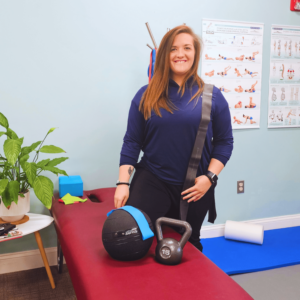Whiplash is the common term used to describe strains and sprains of the muscles, tendons, and ligaments in the neck and head. Usually, this is associated with some sort of sudden impact, like a car accident, sports injury, or fall.
Ligaments are strong elastic fibers that hold joints together. When they are suddenly overstretched and injured by sudden trauma, the joint can become temporarily unstable. To protect the injured area, your brain will cause the surrounding muscles to tighten and spasm to limit movement that might cause more damage. If those muscles and tendons are also injured, other muscles might be recruited to help out, so you may also have stiffness and limited motion in other areas of your body, like your upper back and shoulders, or even your lower back — It’s all connected!
Common Symptoms of Whiplash can include
- neck pain and stiffness
- headaches
- vertigo/dizziness
- upper back and shoulder pain and stiffness
More severe injuries may also include
- Concussion – if your neck is “whiplashed” hard enough, your brain may also be impacted. There are a lot of overlapping symptoms between the two injuries
- Pain in the shoulders and arms – if the discs or nerves in your neck are also injured or inflamed, you may feel numbness, tingling, pain, or weakness in the areas supplied by these nerves.
- TMJ pain – the TMJ can get strained and injured with impacts as well. Since the neck and jaw are connected by muscles, ligaments, and nerves, the movement of this joint is often affected.
- Shortness of breath/breathing problems – muscles, ligaments, and joints of the upper back and ribcage are often strained affected as well. When they are injured, they can’t move well, which may make it feel difficult to breathe.
Muscle spasms, while painful, are your body’s way of protecting you and minimizing further injury! Inflammation and swelling in the joint can create additional stiffness and pain. It’s important to understand that these symptoms are your body’s way of protecting, cleaning up, and repairing damaged tissue. There has been much discussion about whether preventing these necessary processes with medication interferes with the healing process in the long term. Please keep this in mind if you are prescribed muscle relaxers or are tempted to overuse anti-inflammatory medications.
Chiropractic Care for Whiplash Injuries
As with any acute injury, early and proper evaluation and treatment are key to a good recovery. We will do a thorough history and examination to rule out “yellow and red flag” problems like fractures, excess instability that may indicate badly torn muscles or ligaments, or serious nerve damage. Usually, these kinds of severe problems will be evident soon after an injury. X-rays and MRIs are not usually necessary or indicated if there are no signs of nerve damage on examination.
How We Can Help
We always start treatment with the basics of PEACE & LOVE for the treatment of acute injuries. Protection and rest may be necessary for a day or two, but getting moving as soon and safely as possible is essential to prevent muscle weakness and promote healing. Care in our office includes safe and natural therapies to manage pain and inflammation and improve mobility and strength as you heal.
- Chiropractic adjustments to improve joint movement
- Frequency Specific Microcurrent to decrease pain and inflammation
- Soft tissue release to decrease pain, and improve blood flow
- Exercises to improve stability, mobility, and strength
How long healing and recovery takes depends on a variety of factors, including your general health, prior injuries or surgeries, and lifestyle factors like nutrition, fitness, and stress levels. We will always offer advice and support in these areas to help you along the way!





